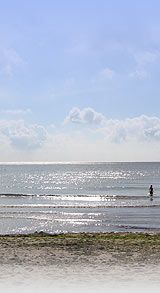6 ordspråk av Donald Lowe
Donald Lowe
Läs om Donald Lowe på Google. Hitta foto...
Aantal gezegden is 2101330
varav 2122549 på nordiska
Gezegde (2101330 st) Zoek
Categoriën (3944 st) Zoek
Auteurs (201411 st) Zoek
Afbeeldingen (4592 st)
Geboren (10498 st)
Gestorven (3319 st)
Datums (9520 st)
Landen (27300 st)
Idiom (4439 st)
Lengths
Toplists (6 st)
Ordspråksmusik (20 st)
Statistik
Deze website richt zich op uitdrukkingen in de Zweedse taal, en sommige onderdelen inclusief onderstaande links zijn niet vertaald in het Nederlands. Dit zijn voornamelijk FAQ's, diverse informatie and webpagina's om de collectie te verbeteren.
Här har vi samlat ordspråk i 13018 dagar!
Vad är gezegde?
Hur funkar det?
Vanliga frågor
Om samlingen
Ordspråkshjältar
Hjälp till!
varav 2122549 på nordiska
Gezegde (2101330 st) Zoek
Categoriën (3944 st) Zoek
Auteurs (201411 st) Zoek
Afbeeldingen (4592 st)
Geboren (10498 st)
Gestorven (3319 st)
Datums (9520 st)
Landen (27300 st)
Idiom (4439 st)
Lengths
Toplists (6 st)
Ordspråksmusik (20 st)
Statistik
Deze website richt zich op uitdrukkingen in de Zweedse taal, en sommige onderdelen inclusief onderstaande links zijn niet vertaald in het Nederlands. Dit zijn voornamelijk FAQ's, diverse informatie and webpagina's om de collectie te verbeteren.
Här har vi samlat ordspråk i 13018 dagar!
Vad är gezegde?
Hur funkar det?
Vanliga frågor
Om samlingen
Ordspråkshjältar
Hjälp till!
 |
Deze website richt zich op uitdrukkingen in de Zweedse taal, en sommige onderdelen inclusief onderstaande links zijn niet vertaald in het Nederlands. Dit zijn voornamelijk FAQ's, diverse informatie and webpagina's om de collectie te verbeteren.
Här har vi samlat ordspråk i 13018 dagar!
Vad är gezegde?
Hur funkar det?
Vanliga frågor
Om samlingen
Ordspråkshjältar
Hjälp till!
 |
